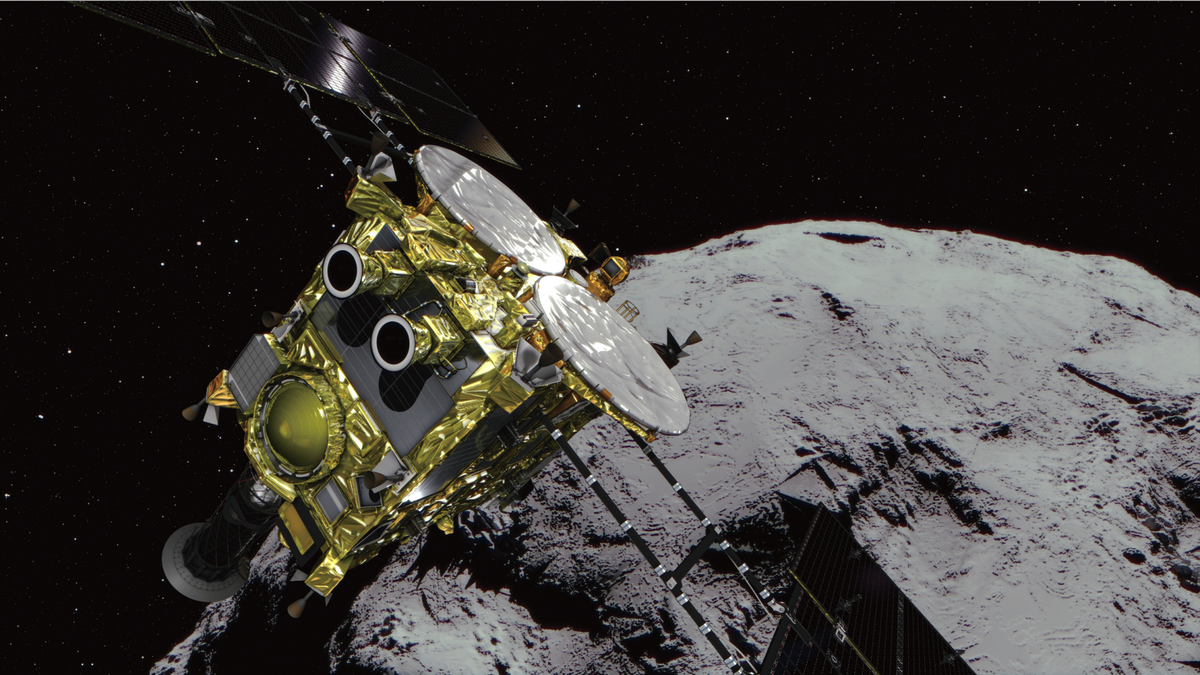
This computer graphics image provided by the Japan Aerospace Exploration Agency (JAXA) shows Ryugu and asteroid explorer Hayabusa2. (JAXA via AP)
Japan’s Hayabusa2 spacecraft has successfully “bombed” asteroid Ryugu in the name of scientific research.
The Japan Aerospace Exploration Agency, or JAXA, said Hayabusa2 dropped a small explosive box which sent a copper ball the size of a baseball slamming into the asteroid, and that data confirmed the spacecraft had safely evacuated and remained intact.
JAXA later confirmed the impact from images transmitted from a camera left behind by the spacecraft which showed the Small Carry-on Impactor (SCI) being released and fine particles later spraying dozens of yards out from a spot on the asteroid.
SPACE 'DUMPLING' RENDEZVOUS: JAPAN'S HAYABUSA2 SPACECRAFT ARRIVES AT ASTEROID RYUGU
Hayabusa2 is operating normally, JAXA confirmed in a statement.
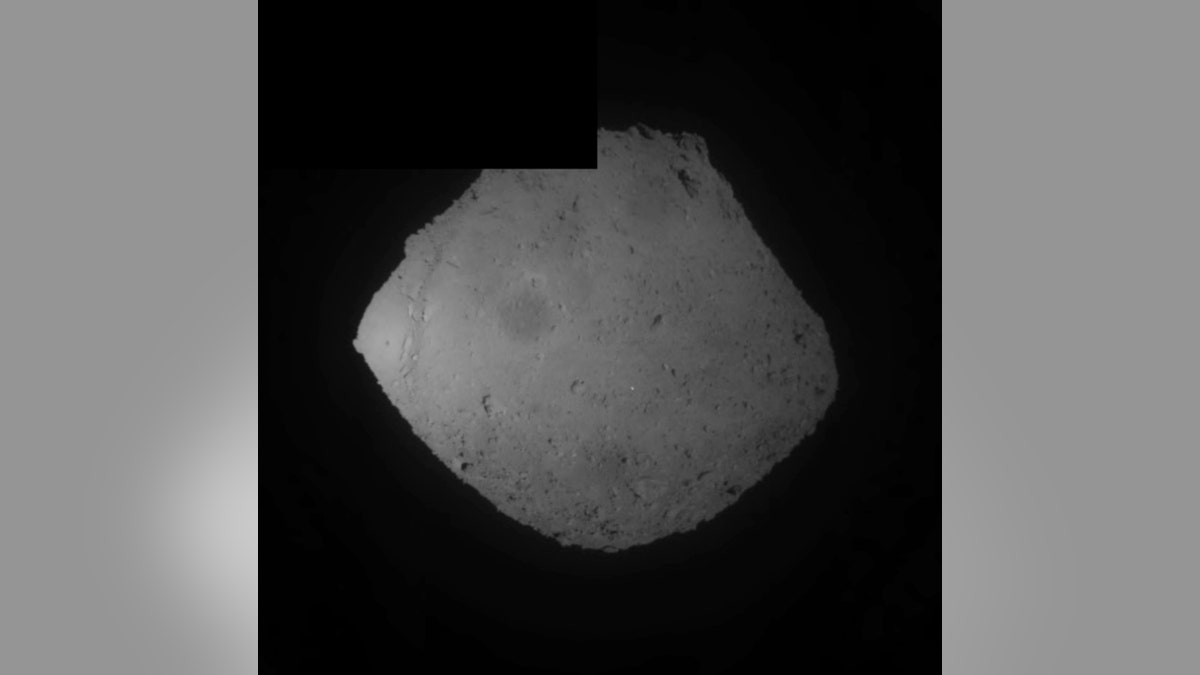
This image released by the Japan Aerospace Exploration Agency (JAXA) shows the asteroid Ryugu Friday, April 5, 2019. (JAXA via AP)
“This is the world’s first collision experiment with an asteroid! In the future, we will examine the crater formed and how the ejector dispersed,” JAXA tweeted on Friday.
The audacious experiment garnered plenty of praise on social media.
GIANT ASTEROIDS ARE WAY HARDER TO BLOW UP THAN WE THINK, SCIENTISTS SAY
JAXA plans to send Hayabusa2, which was moved to the other side of the asteroid, back to the site after dust and debris settle for observations and to collect samples of material from the new crater that was unexposed to the sun or space rays. Scientists hope the samples will help them understand the history of the solar system since asteroids are left over material from its formation.
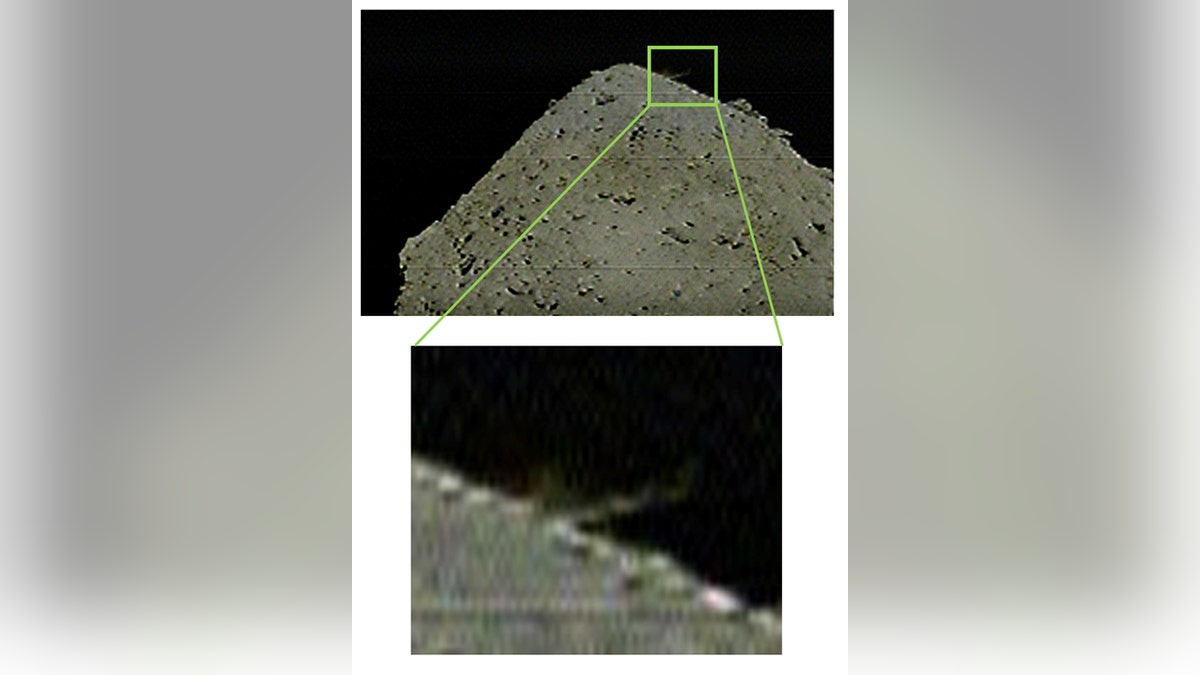
This image captured by the camera separated from Hayabusa2 (DCAM3) shows ejection from Ryugu’s surface, which was caused by the collision of the SCI against Ryugu.
If the recovery attempt is successful, this would be the first time that such samples have been collected. In a 2005 "deep impact" mission to a comet, NASA observed fragments after blasting the surface but did not collect them.
Last month, JAXA announced that a group of scientists participating in the Hayabusa2 mission had detected hydroxyl-bearing minerals on the asteroid by analyzing near-infrared spectrometer readings by the spacecraft. It said that could help explain where the Earth's water came from. The results were published in the online edition of Science magazine.
ANCIENT ASTEROID STRIKES ON MARS MAY HAVE 'PRODUCED KEY INGREDIENTS FOR LIFE'
In February Hayabusa2 briefly touched down onto Ryugu and fired a scientific research “bullet” into the space rock.

This image released by the Japan Aerospace Exploration Agency (JAXA) shows an explosive dropped from Hayabusa2 spacecraft to make a crater on the asteroid Ryugu Friday, April 5, 2019. Japan's space agency JAXA said its Hayabusa2 spacecraft successfully dropped the "small carry-on impactor" made of copper onto the asteroid and collect its underground samples to find possible clues to the origin of the solar system.
Launched on Dec. 3, 2014, Hayabusa2 arrived at Ryugu on June 27, 2018, when the asteroid was almost 170 million miles from Earth. The spacecraft traveled almost 2 billion miles to reach the space rock.
The asteroid, named Ryugu after an undersea palace in a Japanese folktale, is currently about 180 million miles from Earth.
WATER ON ASTEROID BENNU COULD MEAN 'PAY DIRT' FOR SPACE MINERS
In September Hayabusa2 lowered two MINERVA-II1 rovers onto space rock Ryugu.

In this computer graphics image released by the Japan Aerospace Exploration Agency (JAXA), the Hayabusa2 spacecraft is seen above the asteroid Ryugu. ((ISAS/JAXA via AP)
Stunning images taken by the rovers revealed the surface of the “dumpling-shaped” asteroid, which has a diameter of just 2,953 feet.
Hayabusa2 is expected to leave Ryugu at the end of 2019 and return to Earth around the end of 2020.
HOW MUCH WATER MAY BE TUCKED AWAY IN NEARBY ASTEROIDS?
The spacecraft is the successor of JAXA’s Hayabusa, which landed on asteroid Itokawa in November 2005. Despite being dogged with problems, the mission collected a number of asteroid samples, which returned to Earth with Hayabusa in June 2010.
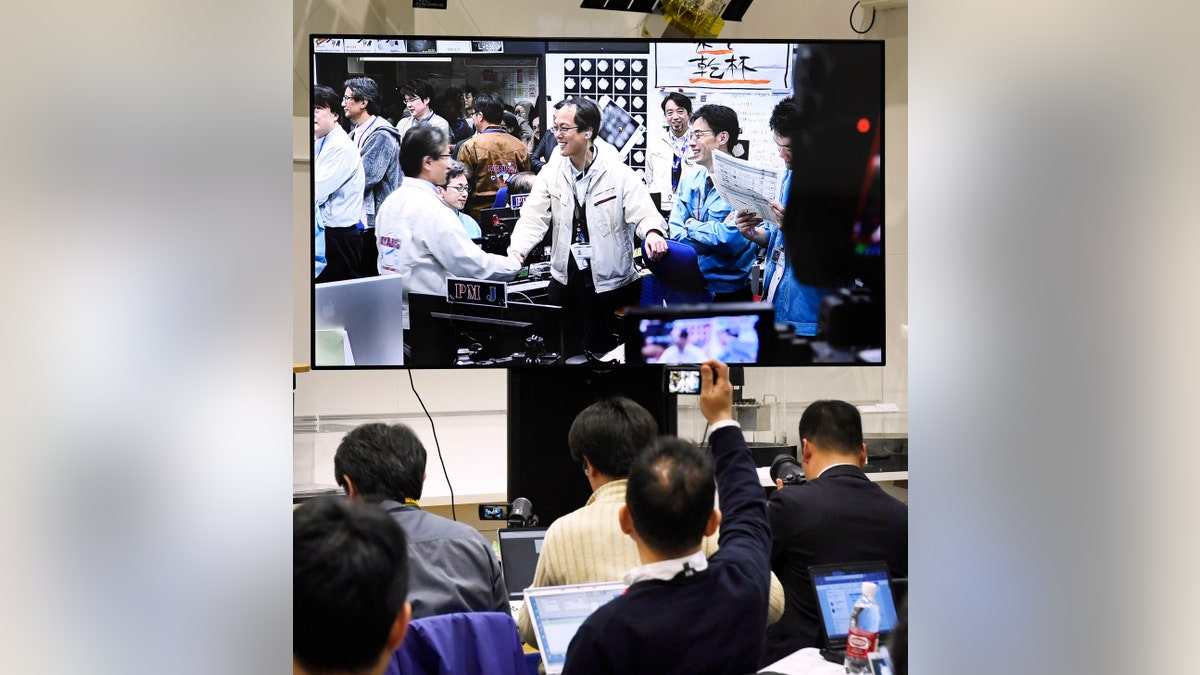
Members of The Japan Aerospace Exploration Agency, or JAXA, seen on screen, celebrate, as Hayabusa2 spacecraft safely evacuated and remained intact after the blast, in Sagamihara, near Tokyo, Friday, April 5, 2019. (Daisuke Suzuki/Kyodo News via AP)
NASA is also conducting amazing asteroid research. The space agency’s OSIRIS-REx spacecraft reached asteroid Bennu on Dec. 3, 2018, after traveling more than 1 billion miles through space.
The asteroid may provide answers to the origin of our solar system, according to NASA.
OSIRIS-REx, which stands for Origins, Spectral Interpretation, Resource Identification, Security-Regolith Explorer, launched in September 2016 from Cape Canaveral Air Force Station.
CLICK HERE TO GET THE FOX NEWS APP
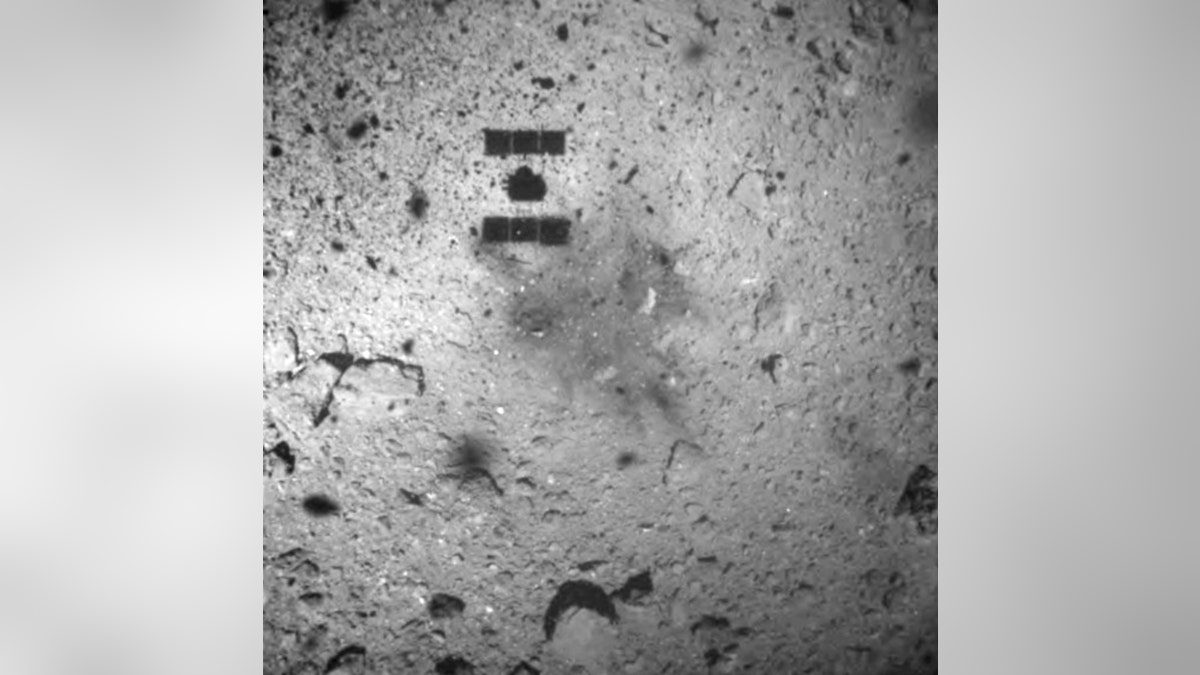
FILE - This Feb. 22, 2019, file image released by the Japan Aerospace Exploration Agency (JAXA) shows the shadow, center above, of the Hayabusa2 spacecraft after its successful touchdown on the asteroid Ryugu. (JAXA via AP, File)
The spacecraft is now surveying the space rock from orbit, recently helping scientists identify water locked inside the asteroid’s clay. The probe is scheduled to briefly touch the asteroid with a robotic arm in July 2020 and retrieve a sample that will be returned to Earth in September 2023.
Fox News’ Jennifer Earl, Chris Ciaccia and the Associated Press contributed to this article.
Follow James Rogers on Twitter @jamesjrogers








































